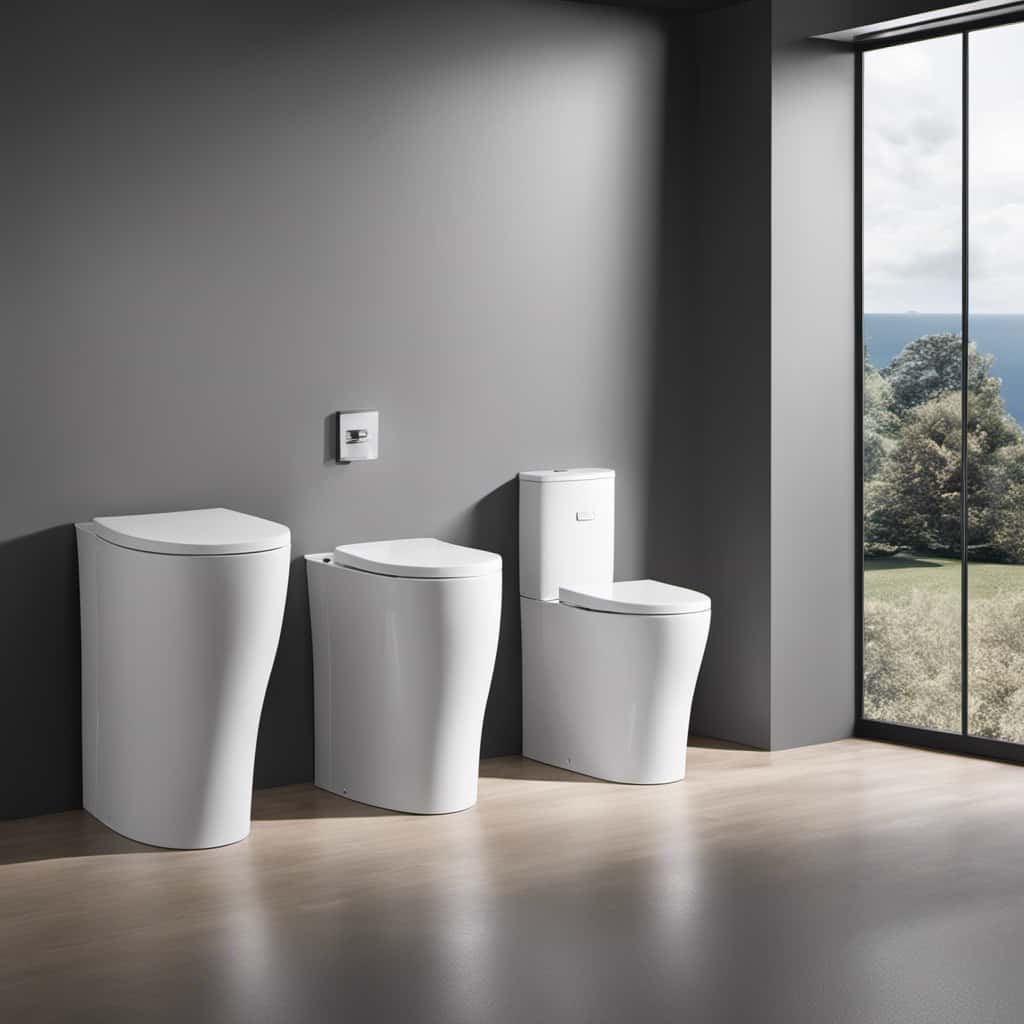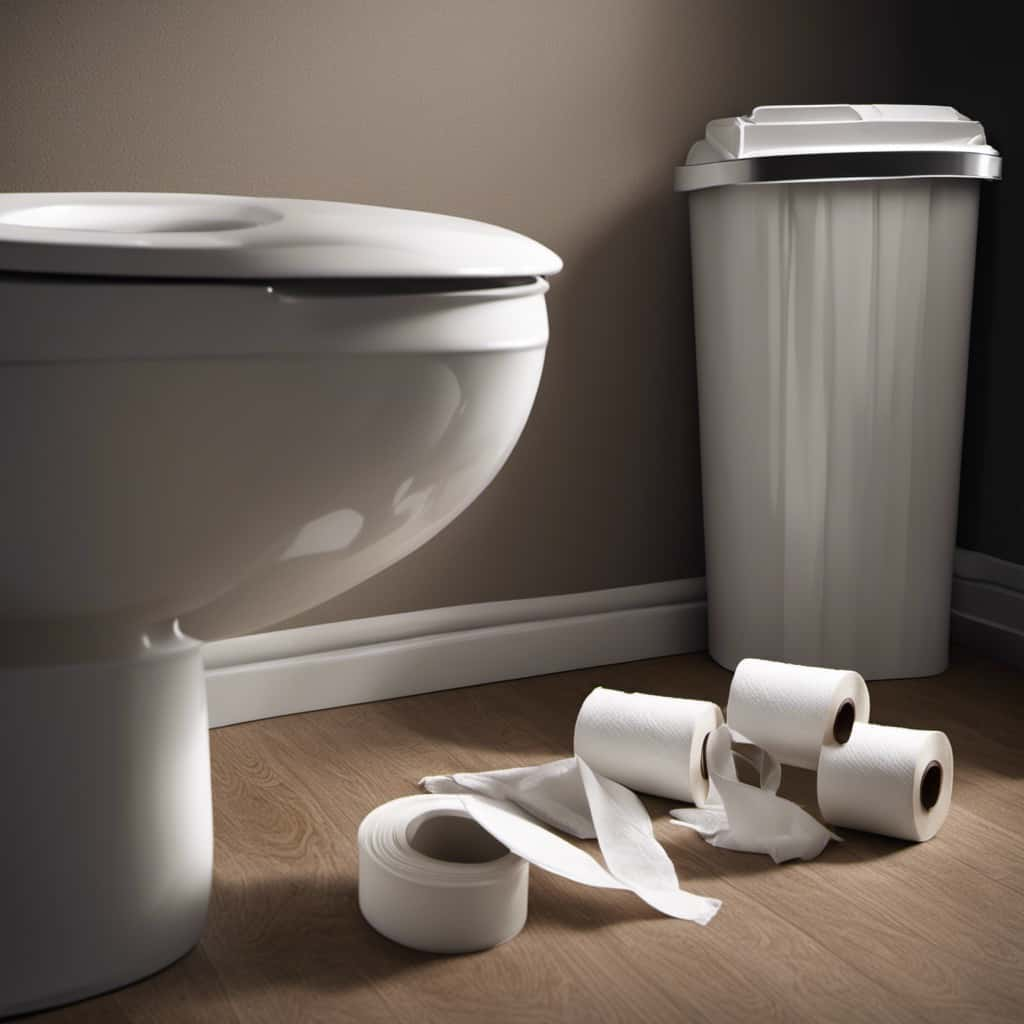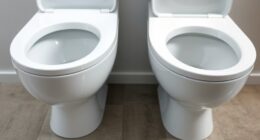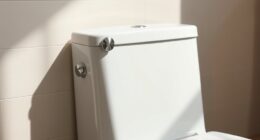Incinerating toilets are an ideal off-grid sanitation solution, allowing you to manage waste sustainably without relying on water or sewer systems. They safely burn waste into sterile ash using electricity or renewable energy, reducing environmental impact and odors. Compact and low-maintenance, these toilets are perfect for remote homes, cabins, boats, or outdoor facilities. If you want to discover how this eco-friendly technology can fit into your lifestyle, there’s more to explore below.
Key Takeaways
- Incinerating toilets safely dispose of waste by burning it into ash, eliminating the need for water or sewer connections.
- They are ideal for off-grid locations, cabins, boats, and remote outdoor facilities with limited or no access to traditional sanitation.
- These toilets operate using electricity or renewable energy sources, offering a sustainable and eco-friendly waste management solution.
- They reduce environmental impact by minimizing waste volume, pathogens, and odors through filtration and sealed combustion chambers.
- Low-maintenance and hygienic, incinerating toilets promote health, hygiene, and sustainability in off-grid and eco-conscious communities.

Have you ever wondered how some remote or eco-friendly communities manage their waste without traditional toilets? It’s a fascinating topic that highlights innovative waste management solutions designed for off-grid living. Incinerating toilets stand out as a practical choice, combining eco-friendly technology with effective waste disposal. Unlike conventional systems that rely on septic tanks or sewage connections, these toilets burn waste at high temperatures, transforming it into ash and gases. This process eliminates the need for water, making it ideal for locations where water conservation is vital.
Incinerating toilets offer eco-friendly waste disposal without relying on water or traditional sewer systems.
When you choose an incinerating toilet, you’re adopting a waste management approach that minimizes environmental impact. The technology is designed to incinerate human waste safely and efficiently, reducing the volume of waste and eliminating pathogens. The combustion process occurs within a sealed chamber, where waste is broken down into inert ash. This ash can be easily disposed of or used as a soil amendment, depending on local regulations. The gases generated are typically vented out safely, often through filters that remove odors and pollutants, ensuring the system remains eco-friendly.
Using an incinerating toilet means less reliance on water and sewer infrastructure, which can be costly and impractical in remote areas. It’s especially beneficial in eco-friendly communities that prioritize sustainability. The technology is compact, requiring minimal space and maintenance, making it suitable for off-grid homes, cabins, boats, or outdoor facilities. Plus, it’s a hygienic solution that reduces the risk of contamination and odor issues associated with traditional waste disposal methods.
Another advantage is that incinerating toilets support sustainable living by reducing waste volume and eliminating the need for chemical treatments or septic tank pumping. They operate on electricity or renewable energy sources like solar power, further emphasizing their eco-friendly nature. This aligns with the goals of off-grid communities, which often seek to minimize their ecological footprint while maintaining a comfortable lifestyle. Additionally, skincare routines that focus on hygiene and cleanliness can be easily maintained with these systems, promoting overall health and well-being.
The durability and low-maintenance design of these systems mean you won’t need specialized skills or frequent repairs, making them a practical choice for long-term use.
Frequently Asked Questions
What Is the Lifespan of an Incinerating Toilet?
You can expect an incinerating toilet to last around 10 to 15 years with proper maintenance. Its lifespan depends on effective waste disposal and consistent odor control. Regular cleaning and timely replacement of parts help extend its durability. You’ll find that investing in quality materials and following the manufacturer’s guidelines guarantees your toilet functions efficiently, reducing odors and waste buildup, ultimately prolonging its useful life.
Are Incinerating Toilets Environmentally Friendly?
Imagine a remote cabin using an incinerating toilet; it minimizes environmental impact by reducing waste and eliminating sewage. These toilets are generally eco-friendly because they efficiently dispose of waste through controlled burning, reducing water use and preventing pollution. However, their environmental friendliness depends on energy sources and proper maintenance. Overall, they offer a sustainable waste disposal option, especially in off-grid locations, by lowering harmful runoff and conserving resources.
How Much Energy Do They Consume per Use?
You’ll find that incinerating toilets typically consume around 1 to 2 kWh per use, depending on their size and design. They’re quite energy-efficient when considering usage frequency, especially if used occasionally. To optimize energy efficiency, it’s best to limit unnecessary incinerations and maintain the unit properly. Overall, they use a manageable amount of energy, making them suitable for off-grid settings where conserving power matters.
What Maintenance Is Required Regularly?
Think of your incinerating toilet as a well-oiled machine that needs regular tune-ups. You’ll check and empty ash containers, replace filters for odor control, and guarantee the waste management system functions smoothly. Regular maintenance prevents odors from escaping and keeps everything sanitary. Cleaning the combustion chamber and inspecting electrical components also help it run efficiently. Staying proactive ensures your off-grid sanitation stays reliable, odor-free, and ready whenever you need it.
Can Incinerating Toilets Be Used in Cold Climates?
Yes, incinerating toilets can be used in cold climates, but you’ll face insulation challenges. Cold weather may slow down the incineration process or cause components to freeze. To prevent this, you should protect the unit well and consider adding a heating element or using a heated shelter. Regular checks are essential to ensure everything functions smoothly, especially during extreme cold to avoid malfunctions.
Conclusion
You now see how incinerating toilets offer a clean, eco-friendly off-grid sanitation solution. They’re easy to use, odorless, and require minimal maintenance—perfect for remote locations. Remember, “A stitch in time saves nine,” so investing in sustainable waste management now can save you headaches later. By choosing incinerating toilets, you’re making a responsible choice for your environment and health. Don’t wait—embrace this innovation and enjoy a hassle-free, eco-conscious lifestyle today.









